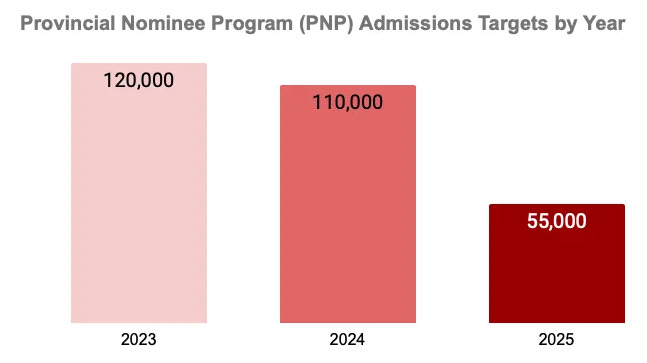Closing the Doors on Express Study Permits
Canada has ended expedited study permit streams. What does this mean for applicants aspiring to study in Canada?
On November 8, 2024, the Government of Canada announced that it would close both express study permit streams — effective immediately.
Originally launched in 2018, the Student Direct Stream (SDS) and Nigeria Student Express stream (NSE) were immigration paths designed to expedite study permit applications for applicants from select countries.
Instead of waiting a minimum 8 weeks to process a normal study permit application, students applying through SDS or NSE could often have their applications processed in less than 20 days (given they met all eligibility requirements like proof of funds, medical exams, etc).
Let’s go through what that means, who was affected, and how this might impact future study permit numbers for 2025 and beyond.
1) Who Is Affected?
The closure of both the SDS and NSE* impacts students from the following countries (grouped by region)
The Americas & the Caribbean (Antigua & Barbuda, Brazil, Colombia, Costa Rica, Peru, St. Vincent & the Grenadines, Trinidad & Tobago)
Asia (China, India, Pakistan, Philippines, Vietnam)
Africa (Morocco, Nigeria*, Senegal)
*Note that the NSE stream only applies to applicants from Nigeria.
2) What Proportion of Canada’s International Students Are From These Affected Countries?
It turns out: a very high proportion.
Given that both express programs targeted students from “highly desirable” countries, it makes sense that nearly two-thirds of Canada’s entire international student population comes from just 4 top SDS- and NSE-affected countries.
Unsurprisingly, more than half of Canada’s international students are from either India or China.
In terms of total study permit holders, you can see that students from India far exceed all other countries.
Trends are particularly interesting when you look at new study permits issued for applicants from top SDS and NSE eligible countries — by year.
The spike in new permits issued was certainly dramatic in the wake of the pandemic, particularly in 2022 as the federal government sought to use international students to fill critical labour market shortages. (Remember the 2 year pause in off-campus work hour restrictions?)
Starting in early 2024, the government began to crackdown on immigration numbers (eg further caps on study permits, limiting off-campus work hours), and we began to see a dramatic drop in new permits issued to students from these countries — especially India.
3) What does this mean for students looking to study in Canada?
The short answer: it depends.
The Government of Canada announced its Immigration Levels Plan 2025-2027 earlier this month, with a clear signal to aspiring students — “we’re clamping down”.
I’ve previously highlighted here how this new Immigration Plan aims to:
Attract more new international students (than work permit holders), and;
Welcome more new permanent residents from WITHIN Canada.
(This is good news for international students currently living in Canada.)
But in terms of aspiring students, there’s a noticeable attempt to restrict alternative immigration pathways, including clamping down on the Provincial Nominee Program (PNP), and now eliminating its express-processing study streams (ie SDS and NSE).
But most importantly, we need to look at the top 2 sources of international students, and where these restrictive immigration policies could lead in 2025.
India
Overall, the 2025 target for new study permits issued is 305,900. Given roughly 41% of current study permits holders come from India, that would leave 125,419 permits for Indian applicants.
Compared with latest numbers from 2024, that’s a cut of 17% — and that’s just using the total study permits for 2024 as of Q3! Likely this projected cut will be much higher.
Ultimately, I would expect to see a continued sharp decline in international students from India — a factor that could prove devastating to Canada’s post-secondary sector, especially for Ontario public colleges.
China
China represents a less dire — but no less impactful — situation.
With roughly 1 in every 10 Canadian international students coming from China, the new target for 2025 will cut study permits for Chinese students by 35%.
These sharp declines in admitted students from China will prove especially damaging for Canada’s largest universities, especially the University of Toronto — which itself has nearly 16,000 Chinese students currently enrolled.
Conclusion
As we head into 2025, it should be noted that with processing backlogs piling up, and recently terminated alternative study pathways — Canada is going to have one hell of a time recruiting new international students.
Note on Sources: All data sourced from IRCC Open Government portals, and all graphs designed by yours truly.













